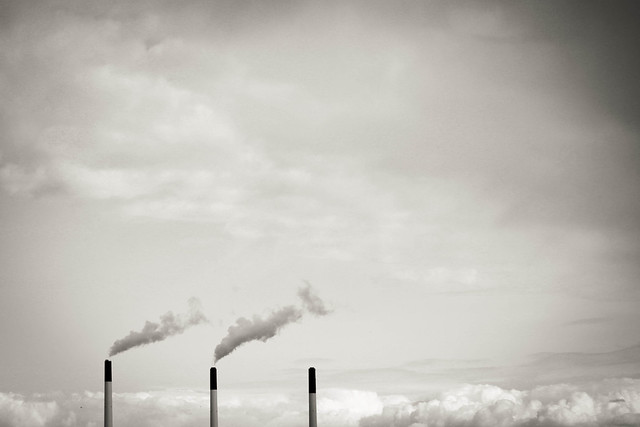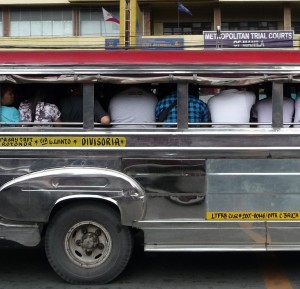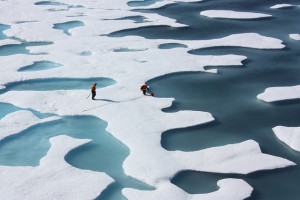Scientists more certain humans cause global warming
A much-awaited United Nations report on the science behind climate change says scientists are 95 percent sure that humans are the “dominant cause” of global warming since the 1950s. The document, which is meant to serve as a guideline for policymakers to shift towards greener energies, warns that the impact of greenhouse gas emissions could linger for centuries.
The report by the Intergovernmental Panel on Climate Change (IPCC) is considered the most comprehensive document on our understanding of the mechanics of a warming planet and the physical evidence behind it.
The following are the main findings of the report:
- Global warming is “unequivocal,” on the ground, in the air and in the oceans. And It’s “extremely likely” or 95 percent likely that human activities, led by the burning of fossil fuels, are the main cause of a rise in temperatures since the 1950s.
- Concentrations of carbon dioxide and other greenhouse gases in the atmosphere have increased to levels that are unprecedented in at least 800,000 years. The burning of fossil fuels is the main reason behind a 40 percent increase in C02 concentrations since the industrial revolution.
- Short, individual periods, such as 1998, which was an unusually warm year, are influenced by natural variability and are not an indicator of long-term climate trends.
- Global temperatures are likely to rise by 0.3 to 4.8 degrees Celsius, or 0.5-8.6 Fahrenheit, by the end of the century depending on how much governments control carbon emissions.
- Sea levels are expected to rise a further 10-32 inches (26-82 centimeters) by the end of the century. That will pose a threat to coastal cities from Shanghai to San Francisco.
- The Greenland and Antarctic ice sheets have been shrinking over the past two decades. Glaciers have continued to melt almost all over the world. Arctic sea ice has shrunk and spring snow cover has continued to decrease, and it is “very likely” that this will continue.
Unicef: Children will be hit hardest by climate change

Unicef says children have been left out of the climate change debate (Photo: CC BY-SA 2.0 by Dhilung Kirat/flickr.com)
As leading scientists gather in Stockholm to produce a detailed review of our knowledge of climate change so far, a new study released this week says that rising global temperatures pose the biggest risks to children.
Children’s charity Unicef says health problems, a relative lack of resources, vulnerability to disease, malnutrition and migration make children especially vulnerable to climate change. Despite that, the group says, children have largely been left out of the debate so far.
“We are hurtling towards a future where the gains being made for the world’s children are threatened and their health, wellbeing, livelihoods and survival are compromised … despite being the least responsible for the causes,” David Bull, Unicef’s UK executive director, said “We need to listen to them.”
In the paper, the group warns that changing weather in the form of an increase in droughts, floods, heatwaves and storms are among the most pressing concerns facing the young.
“The legacy of climate change is no longer a distant projection, but will be felt by children born this year and beyond. A child born in 2013 will be 17 in 2030 and 37 in 2050, when the worst impacts of climate change will begin to be felt,” the charity says.
Today, 700 million children live in the ten countries most vulnerable to climate change, and it’s estimated that 25 million more children will be malnourished as a result of climate change by 2050.
Meanwhile, the Intergovernmental Panel on Climate Change (IPCC) meeting in Stockholm is expected to warn that climate change is almost certainly caused by human actions. Scientists are expected to say it will lead to a global temperature rise likely to top 2C, with related effects including the shrinking of the Arctic ice cap and glaciers, a rise in sea level by nearly 1 meter by the end of this century and more extreme rainfall in parts of the globe.
Climate Change: The longer we wait the more expensive it will get.

The Potsdam Institute for Climate Impact Research (PIK) recently released a new study that offers two different and probably controversial results. At first the researches say that everything is going to be extremely expensive the longer we wait until political leaders get active. „Global economic growth would be cut back by up to 7 percent within the first decade after climate policy implementation if the current international stalemate is continued until 2030“, the paper says. That‘s an awful lot compared to the 2 percent that are expected if there‘s a climate agreement reached by 2015.
The researchers conclude that it is most relevant to not further postpone mitigation to keep climate targets (the 2 degrees above pre-industrial levels-target e.g.) in reach. “Economists tend to look at how things balance out in the long-term, but decision-makers understandably worry about additional burdens for the people and businesses they are responsible for right now. So increased short-term costs due to delaying climate policy might deter decision-makers from starting the transformation. The initial costs of climate policies thus can be more relevant than the total costs”, lead-author Gunnar Luderer says.
On the other hand Ottmar Edenhofer, he’s the co-author of the study and chief-economist of PIK, formulates a goal that could make it possible to keep the earth’s rising temperatures below the 2 degrees-target mentioned above. But his demands seem to be quite optimistic. At first, he said, a wordwide carbon trading system must reach prices for CO2 emission rights of 20 to 50 Euro (27 to 67 Dollar) per ton. That would be the only way to increase the price of fossil energy sources at a level that could force the industries to switch over to green energy alternatives. Here we should keep in mind that a ton of CO2 is currently traded at just about 3 Euro (4 Dollar) in Europe.
According to Edenhofer especially technologies for carbon dioxide removal from the atmosphere might be required in the future to reach the climate targets. This implies the use of bio-energy alongside wind or solar power, with plants consuming CO2, combined with carbon capture storage (CCS), storing underground the emissions from biomass combustion. The longer it takes to start climate policies the higher is the world’s reliance on these technologies will be, the study adds.
For the study the scientists produced 285 alternative climate change mitigation scenarios, with varying assumptions on the course of international climate negotiations on the one hand and on the other hand the availability of low carbon technologies from solar and wind power to bio-energy, CCS and energy efficiency. For the economic evaluation, they considered indicators like mitigation costs, energy prices or potential financial transfers induced by an international carbon market.
Stop food waste for climate’s sake
No question, food waste is not good at all. Now, the FAO expressed in numbers how bad it really is – for climate and environment. So, if you need some astonishing reasons to change something – here you go:
In total, one third of the world’s food production is wasted or lost each year.
The carbon footprint of the food wasted is 3.3 gigatons of CO2 equivalent – which makes food waste the third biggest CO2 emitter after the US and China.
The fresh water we are wasting by wasting food equals 250 km³ – three times the volume of the Lake Geneva and enough to meet the water demand of all people in the world.
Growing the amount of wasted food occupied a 1.4 billion hectares of land which equals about 30 percents of the world’s agricultural land or the land area of China, Mongolia and Kazakhstan altogether.
If you are more a economist kind of person: the economic loss that comes along with this extensive food waste is 750 billion US-Dollar or in other words: the GDP of Switzerland, one of Europe’s stablest economies.
If you know think this it not your problem to solve but a task for companies and politicians – you are, well, not wrong, but not right neither. Here’s a little video produced by the FAO that shows, what can be done.
A hot ride in Manila
 If someone has to use public transport in Manila, people most likely go by Jeepney. It‘s a typical Philippine transportation. Sometimes it’s extremely crowded, people squeeze in there like sardines in a can if they have to travel from one to another location. Most of all, the Jeepney is a damn hot ride, especially from an outer perspective. Each one of them is painted in a different way, very often with Christian blessings or something that is kind of a job description of the car‘s owner, „banana dealer“ for example. Some of the custom bodies are decorated with sculpturs, so it‘s possible to meet four big horses sitting on a something that‘s acctually a public transport vehicle. Fantasy has no borders, right?
If someone has to use public transport in Manila, people most likely go by Jeepney. It‘s a typical Philippine transportation. Sometimes it’s extremely crowded, people squeeze in there like sardines in a can if they have to travel from one to another location. Most of all, the Jeepney is a damn hot ride, especially from an outer perspective. Each one of them is painted in a different way, very often with Christian blessings or something that is kind of a job description of the car‘s owner, „banana dealer“ for example. Some of the custom bodies are decorated with sculpturs, so it‘s possible to meet four big horses sitting on a something that‘s acctually a public transport vehicle. Fantasy has no borders, right?
And the number of Jeepneys in Manila is epic. Watching them drive by in the city sometimes feels like visiting a huge street art gallery.
 Historically Jeepneys were American army jeeps left over from Wolrd War II. The word comes from a combination of the words “jeep” and “jitney” – which is something like a cab or bus carrying passengers on a regular route with flexible schedule. Today they are produced on a regular basis.
Historically Jeepneys were American army jeeps left over from Wolrd War II. The word comes from a combination of the words “jeep” and “jitney” – which is something like a cab or bus carrying passengers on a regular route with flexible schedule. Today they are produced on a regular basis.
But: As nice as Jeepney‘s may look the bad they are for the environment, guzzling an amazing lot of gas. So the gouvernment thinks about to at least lower the number of Jeepneys cruising the streets. That good for the environment of course, but it‘s sad for the eye.














Feedback